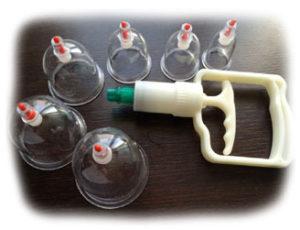SHARE WITH FRIENDS:
Bismillahir roxmonir rahiym
Praise be to Allaah, and peace and blessings of Allaah be upon His Messenger, peace and blessings of Allaah be upon him, and his family, his Companions, and his followers.
Assalamu alaykum wa rahmatullahi wa barakatuh.
In this article, we will talk about Hijama (bleeding), its meaning, virtue, benefits, how to use it in practice, and on what days it is performed.
First of all:
Hijama is derived from the word volume, which means to suck. If the child sucks on the mother's breast, it is said in Arabic, "Hajama as-sabiyu ummahu." If a person who receives blood takes it by sucking it, it is called Hajj. The profession of drawing blood is called hijama, and the tip of a blood vessel is called Mihjam. (From the Arabic language book)
Fuqaha's descriptions of Hijama:
Some scientists have noted that the hijab (provided it is sucked) is used to draw blood from the back of the head using a suction device.
Zarkani said, "Hijama can be done not only on the back of the head, but also on other parts of the body. That is, it is possible to remove blood that has been damaged by hijama." The Khattabis also support this view.
Thus, it is said, "Hijama is the removal of broken blood from the body by means of suction (both ancient and modern) equipment."
Hijama has been known since ancient times. The ancient Chinese (Chinese), the Babylonians and the Pharaohs also used it in practice. This is evidenced by photographs depicting the remnants of them treating some diseases in Attica through the Hijama.
The ancients used cultural (gold, silver) bowls (jars) and ox horns in this work. They placed these horns where they wanted to draw blood from the patient’s body, sucked the air out of it through a small hole in the three parts of the horn, and emptied the inside of the horn. For example, glass jars can be used in this work. A piece of cotton or something similar is burned in a jar, drained of air, and placed in the place where the blood is to be taken from the patient's body, before which the place is cut with something (razor, diamond). .
Qualities of hijab:
It was narrated on the authority of Sayyid ibn az-Zubayr from Ibn 'Abbas that he narrated from the Messenger of Allaah (peace and blessings of Allaah be upon him) in his saheeh:
The Messenger of Allaah (peace and blessings of Allaah be upon him) said: Healing is in three things: drinking honey, slicing the hijab, and burning it with grass. And will I turn my nation away from the Fire? ' (Bukhari: 5269)
It is narrated on the authority of Sahih Bukhari and Muslim that Anas ibn Malik, when asked about the profession of Khayyam, said: The Messenger of Allaah (peace and blessings of Allaah be upon him) did Hijama. He ordered Abu Tayyiba, who was on a pilgrimage to the Prophet (peace and blessings of Allaah be upon him), to feed him two sa (about 5 kg on average) and ordered his family to reduce his tax a little. Then (the Messenger of Allaah (peace and blessings of Allaah be upon him)) said: The best thing for your treatment is Hijama. Or, they say, "Hijama is one of the most appropriate of your treatments."
Benefits of hijab:
It is no secret that hijab, both in ancient times and today, has been seen in practice as having significant benefits in the treatment of many diseases.
The following are diseases for which hijama has been used in practice and its benefits have been observed with the permission of Allah Almighty.
1 - Diseases of the circulatory system.
2 - Blood pressure, heart disease.
3 - Chest pain, shortness of breath.
4 - Headache and eye pain.
5 - Pain in the neck, abdomen and muscles (rheumatism).
6 - Some types of heart, chest diseases and joint pain, etc.…
Another aspect is that in some cases, even if other things (medicines) from the environment are not added to the hijab, it alone is very useful and relieves pain.
For more information on the benefits of hijama, refer to Ibn al-Qayyim's Zadul-Ma'ad and Ibrahim al-Hazimi's Judgment and Benefits of Hijama.
Method of hijab:

Notification: KIU-Library
Notification: sell cc good
Notification: brentlynn.com
Notification: pheụ̄̀xnthæ̂ngeind̀wn krungtheph
Notification: view
Notification: Spectrum murder
Notification: sulfuric acid for sale
Notification: view website
Notification: weed delivery toronto
Notification: stock futures
Notification: to x̀ānmạng
Notification: penis enlargement